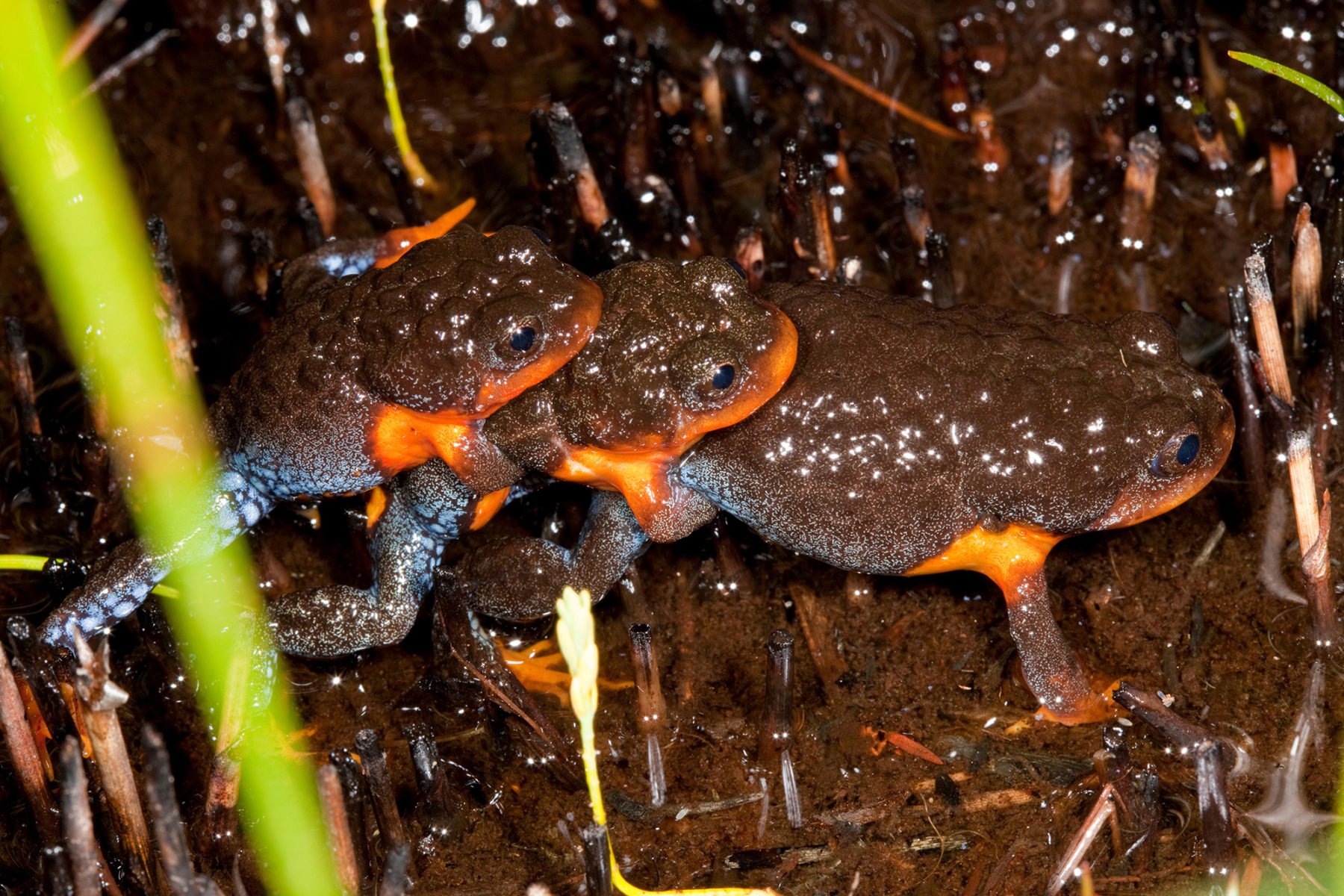The sunset frog looks like a forbidden snack

Bec Crew
Bec Crew

Other than looking like a snack, the sunset frog (Spicospina flammocaerulea) is one of Australia’s most fascinating frogs. It’s found in only one place on Earth, nestled in the southwest corner of Western Australia in the moist, soggy peat swamps near the tiny town of Walpole.
The sole member of its genus, which speaks to how unusual it is, the sunset frog is a relatively new addition to the scientific record. It was discovered in the early 1990s, and was formally described in 1997.
It’s also one of the oldest species of frogs in Western Australia. Researchers estimate that the sunset frog diverged from its closest relatives (from the Uperoleia genus of toadlets) at least 30 million years ago.
It also has some fun mating habits.
Like many species, sunset frog females are larger than the males. The females max out at about 36 mm long, while the males rarely grow to more than 34mm. It doesn’t sound like a huge difference, but it sure makes a difference when these frogs are trying to mate.
Very few species of frogs can reproduce via internal fertilisation. Instead, most mate via ‘amplexus’. The term describes a behaviour wherein the male will ‘hug’ the female very closely and the pair will release their sperm and eggs in close proximity with hopes that some eggs will be fertilised.
There are many different ways a frog can perform amplexus.
There’s the ‘axillary amplexus’ position, which is where the male grasps the female behind her front legs with his front legs.
There’s ‘inguinal amplexus’, where the male grasps the female in front of her back legs with his front legs. Here are a couple of male sunset frogs demonstrating this to very, very awkward effect:

Rarer forms of amplexus that have been observed in certain frog species include the ‘straddle’, wherein the male’s pelvis is positioned over the female’s head, and the ‘cloacal apposition’, where the male and the female hug each other rear-to-rear, facing away from one another.
Another great position is simply referred to as ‘glued’, because the male sticks himself to the female’s rump using some strategically applied mucus secretions.
You do you, frogs.
The sad news is the sunset frog is exceedingly rare and under threat of extinction, because its remaining population is separated into small and scattered groups within its tiny pocket of habitat in Western Australia. Threats such as the chytrid fungus, bushfires and habitat loss are wreaking havoc on the remaining individuals.
Conservation groups, including Perth Zoo, are working on breeding programs to build up the population. Hopefully their efforts, including breeding and releasing 30 adults and 251 tadpoles into the wild in 2011, will give the species a fighting chance.


